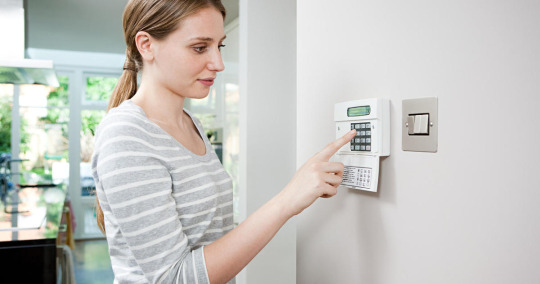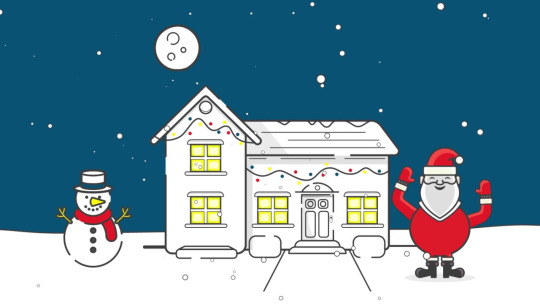#diy home security
Explore tagged Tumblr posts
Text
🚪🔔 Upgrade your front door in just 5 minutes with the new Ring Battery Video Doorbell (2024)! Wireless, easy to install, and gives you a full HD head-to-toe view of every visitor 📲💬 Plus, get a 30-day free trial of Ring Protect. Perfect for renters, homeowners & anyone who wants peace of mind. #SmartHome #RingDoorbell #HomeSecurity #DIYTech
#DIY Home Security#Front Door Surveillance#HD Video Doorbell#Head-to-Toe Video Camera#Home Safety Gadgets#Home Security for Renters#Outdoor Security Camera#Ring Battery Doorbell Review#Ring Doorbell Features#Ring Protect Subscription#Smart Home Devices UK#Smart Home Security#Tech for Safer Home#Video Doorbell for Flats#Video Doorbell with App#Wireless Doorbell Camera
0 notes
Text
Yale Approach Lock with Wi-Fi and Yale Keypad Offer Easy DIY Smart Security Options for Renters
Today, Yale has introduced its first retrofit smart security solution, which will make the brand’s security products available for the first time to most US renters. The Yale Approach Lock with Wi-Fi and the wireless Yale Keypad are designed with first-time users, renters, and those hesitant to modify their locks in mind; these products promise an affordable, top-tier, and user-friendly solution, with a myriad of access options for key-free convenience.
0 notes
Text
How to Prepare for a Business Security Audit?

A security audit is a critical process that helps organizations assess their security posture, identify vulnerabilities, and ensure compliance with industry regulations and best practices. Whether conducted internally or by a third-party auditor, preparing for a security audit is essential for demonstrating a commitment to safeguarding sensitive data, protecting assets, and maintaining operational continuity. Here are some steps to help you prepare for a business security audit:
1. Understand the Audit Scope: Begin by understanding the scope and objectives of the security audit. Determine which areas of your business will be assessed, such as cybersecurity, physical security, access controls, data protection, and compliance with relevant regulations. Clarify the audit process, timeline, and requirements with the audit team or external auditor to ensure alignment with your organization's goals and objectives.
2. Gather Documentation and Policies: Collect relevant documentation, policies, and procedures that demonstrate your organization's commitment to security. This may include security policies, incident response plans, disaster recovery plans, access control lists, network diagrams, security awareness training materials, and compliance documentation. Ensure that these documents are up to date, comprehensive, and easily accessible to auditors.
3. Conduct a Pre-Audit Assessment: Perform a pre-audit assessment to identify potential security gaps, vulnerabilities, and areas for improvement. Conduct vulnerability scans, penetration tests, and risk assessments to evaluate the effectiveness of your security controls and identify any weaknesses that need to be addressed before the audit. Review security logs and incident reports to identify any past security incidents or breaches that may require remediation.
4. Address Security Findings and Remediate Vulnerabilities: Once vulnerabilities and security gaps have been identified, take proactive steps to address them and remediate any issues before the audit. Implement security controls, patches, and updates to mitigate known vulnerabilities, strengthen access controls, and improve overall security posture. Document remediation efforts and keep detailed records of actions taken to address security findings.
5. Train Employees on Security Awareness: Security awareness training is essential for ensuring that employees understand their role in maintaining security and compliance. Provide comprehensive training programs that cover topics such as password security, phishing awareness, data handling procedures, and incident reporting. Encourage employees to remain vigilant and report any security concerns or suspicious activities promptly.
6. Review Compliance Requirements: If your organization is subject to regulatory requirements or industry standards, such as GDPR, HIPAA, PCI DSS, or ISO 27001, ensure that you are compliant with all relevant regulations and standards. Review compliance requirements and ensure that your security controls, policies, and procedures align with regulatory mandates. Conduct internal audits and assessments to validate compliance and address any non-compliance issues proactively.
7. Prepare Documentation and Evidence: Compile all necessary documentation and evidence to support your organization's security posture and compliance efforts. Organize documentation in a logical and structured manner, and ensure that it is readily accessible to auditors during the audit process. Be prepared to provide evidence of security controls, policies, procedures, and compliance efforts as requested by auditors.
8. Conduct Mock Audits: Consider conducting mock audits or internal reviews to simulate the audit process and identify any potential issues or gaps in your security posture. Use mock audits as an opportunity to test the effectiveness of your security controls, evaluate your readiness for the audit, and identify areas for improvement. Incorporate feedback from mock audits to strengthen your security posture and enhance preparedness for the actual audit.
In conclusion, preparing for a business security audit requires careful planning, assessment, and remediation of security vulnerabilities and compliance gaps. Once the audit is complete, you may discover a need for improving your company’s security. If you have questions about how to update or upgrade your system, just reach out to the Cove Smart team of experts.
#diy home security#home security#home security cameras#home security systems#diy#home & lifestyle#home decor#business#assets#history
0 notes
Text
4 Qualities that Attract Criminals to a Business

Running a successful business involves managing various aspects, including security. Understanding what qualities may attract criminals to your business is crucial for implementing effective security measures. Here are four qualities that can make a business more vulnerable to criminal activity:
1. Poor Lighting and Visibility: Inadequate lighting and low visibility around the premises create an inviting environment for criminals. Dark or poorly lit areas provide cover for illegal activities such as vandalism, theft, and unauthorized entry. Businesses with dimly lit parking lots, alleys, or building entrances are more susceptible to criminal behavior. Installing bright outdoor lighting and surveillance cameras can deter criminals and improve overall security.
2. Lack of Surveillance and Security Measures: Businesses without visible security measures are easy targets for criminals. The absence of security cameras, alarm systems, or security personnel signals to potential intruders that the premises are unprotected. Criminals are more likely to target businesses where they can operate without fear of detection or apprehension. Implementing visible security measures such as surveillance cameras, alarm systems, and access control systems can significantly reduce the risk of criminal activity.
3. Easy Access Points and Weak Entry Points: Businesses with poorly secured entry points, such as doors and windows, are vulnerable to break-ins and burglaries. Criminals look for weaknesses in security infrastructure, such as outdated locks, flimsy doors, or unprotected windows, to gain unauthorized access to the premises. Businesses with easily accessible entry points are prime targets for theft, vandalism, and other criminal acts. Strengthening entry points with sturdy locks, security bars, and reinforced doors and windows can deter criminals and enhance overall security.
4. Remote or Isolated Location: Businesses located in remote or isolated areas are more susceptible to criminal activity due to the lack of nearby witnesses or security patrols. Criminals often target businesses in secluded locations where they can operate without attracting attention. Remote businesses, such as warehouses, storage facilities, or construction sites, are at higher risk of theft, vandalism, and property damage. Implementing additional security measures such as perimeter fencing, motion-activated lighting, and regular security patrols can help mitigate the risks associated with remote locations.
Conclusion: Identifying and addressing the qualities that attract criminals to a business is essential for protecting employees, customers, and assets. By improving lighting and visibility, implementing visible security measures, securing entry points, and addressing vulnerabilities associated with remote locations, businesses can enhance their security posture and reduce the likelihood of criminal activity. Cove Security can survey and install security solutions that best fit your business needs, layout, and budget. For more information about our products and service, feel free to contact us.
#diy home security#diy#home security#home security camera#homesecurity#safety#tips#prevention#cameras#doors#windows
0 notes
Text
Cost and Benefit Analysis of a Home Security System

Investing in a home security system is a significant decision for homeowners, and understanding the costs and benefits associated with it is crucial. Let's delve into the cost and benefit analysis of installing a home security system:
Costs:
Initial Installation: The upfront cost of installing a home security system typically includes the purchase of equipment such as cameras, sensors, control panels, and alarms. Depending on the system's complexity and features, installation costs can vary.
Monthly Monitoring Fees: Many home security companies offer monitoring services for an additional monthly fee. These fees cover 24/7 monitoring by a professional monitoring center, which can alert authorities in case of a security breach.
Maintenance and Upkeep: Home security systems require regular maintenance to ensure they function correctly. This may involve battery replacements, software updates, and occasional repairs, which can incur additional costs over time.
False Alarm Fees: In some areas, false alarms triggered by home security systems may result in fines or fees imposed by local authorities. Homeowners should be aware of these potential costs and take measures to minimize false alarms.
Benefits:
Crime Deterrence: One of the most significant benefits of a home security system is its ability to deter burglars and intruders. Visible security cameras, alarm systems, and yard signs indicating the presence of a security system can discourage potential criminals from targeting your home.
Remote Monitoring and Control: Many modern home security systems offer remote monitoring and control capabilities, allowing homeowners to access live video feeds, arm/disarm alarms, and receive alerts on their smartphones or other devices. This provides peace of mind and allows homeowners to keep an eye on their property even when they're away.
Emergency Response: In the event of a security breach or emergency situation such as a break-in, fire, or medical emergency, a home security system can quickly alert authorities and emergency services, potentially reducing response times and minimizing property damage or harm to occupants.
Insurance Discounts: Installing a home security system may qualify homeowners for discounts on their homeowner's insurance premiums. Insurance companies often offer reduced rates to homeowners with security systems in place, as these systems decrease the likelihood of theft or property damage.
Property Protection: Beyond deterring burglaries, home security systems can also safeguard your property from environmental hazards such as fires, floods, and carbon monoxide leaks. Smoke detectors, water sensors, and carbon monoxide detectors integrated into a security system can provide early warnings and help prevent property damage and personal injury.
When considering the costs and benefits of a home security system, homeowners should weigh their individual needs, budget constraints, and risk factors. If you’re considering investing in a home security system or just want to learn more, you can talk to a Cove Smart representative by contacting us, and we’ll be happy to help with any questions or concerns you may have!
0 notes
Text
How to Avoid Holiday Fire Hazards?

The holiday season is a time of joy and celebration, but it also comes with an increased risk of fire hazards. From festive decorations to food traditions, several factors can contribute to potential fire incidents. However, with some precautions and proactive measures, you can ensure a safe and fire-free holiday season for you and your loved ones. Here are some essential tips to help you avoid holiday fire hazards:
1. Choose Fire-Resistant Decorations: When decorating your home for the holidays, opt for decorations that are labeled as flame-resistant or flame-retardant. These materials are less likely to catch fire and can help minimize the risk of accidental ignition.
2. Keep Flammable Items Away from Heat Sources: Ensure that flammable items such as curtains, tablecloths, and wrapping paper are kept at a safe distance from heat sources like candles, fireplaces, and heaters. Avoid placing decorations near open flames or hot surfaces to prevent them from catching fire.
3. Use Candles Safely: If you use candles for decoration or ambiance, place them in sturdy, non-flammable holders and keep them away from combustible materials. Never leave candles unattended, and extinguish them before leaving the room or going to bed. Consider using flameless LED candles as a safer alternative.
4. Practice Safe Cooking Habits: Cooking is a central part of many holiday celebrations, but it can also pose a significant fire risk. Remain vigilant while cooking, especially when using stovetops and ovens. Keep flammable items away from the cooking area, and never leave cooking appliances unattended.
5. Check Smoke Alarms and Fire Extinguishers: Ensure that smoke alarms are installed on every level of your home, including inside and outside sleeping areas. Test smoke alarms regularly and replace batteries as needed. Keep fire extinguishers handy in key locations throughout your home and make sure everyone knows how to use them.
6. Safely Dispose of Fireplace Ashes: If you have a fireplace, properly dispose of ashes in a metal container with a tight-fitting lid. Allow ashes to cool completely before disposing of them, and keep the container away from combustible materials. Never dispose of ashes in a paper or plastic bag.
7. Water Your Christmas Tree: If you have a live Christmas tree, keep it well-watered to prevent it from drying out and becoming a fire hazard. Check the water level in the tree stand regularly and keep the tree away from heat sources such as heaters and fireplaces.
8. Have an Emergency Plan: Prepare and review an emergency evacuation plan with your family in case of a fire. Make sure everyone knows the fastest and safest way to exit the home, and designate a meeting place outside. Practice the evacuation plan regularly to ensure everyone is familiar with the procedure.
By following these simple tips and staying vigilant, you can minimize the risk of holiday fire hazards and enjoy a safe and festive season with your family and friends. With Cove, we can help you choose the right system for your family’s needs and provide professional installation and monitoring services.
#covesmart#diy home security#architecture#crafts#diy#home & lifestyle#furniture#home decor#interiors#tips#prevention
0 notes
Text
How to Turn Your Old Android Phone into a Mini CCTV Camera
How to Turn Your Old Android Phone into a Mini CCTV Camera Do you have an old Android phone gathering dust in a drawer? Instead of letting it go to waste, why not give it a new lease on life by transforming it into a powerful and cost-effective mini CCTV camera? This ingenious hack provides a fantastic solution for home security, pet monitoring, or even keeping an eye on your baby without…
#Android security#cheap CCTV#Dailymore Tech#DIY security camera#free surveillance app#home security#home surveillance#IP webcam#mini CCTV camera#motion detection#old Android phone#remote monitoring#repurpose old phone#security camera#security solution#security tips
0 notes
Text
🛠️ Why DIY Lock Installation Can Cost You More in Philadelphia
Hey Philly friends 👋 — let’s talk locks! 🔐
We’ve all been there. You grab a new door lock from the hardware store, YouTube a quick tutorial, and think, “Hey, I can do this myself.” It seems easy enough, right? Just a screwdriver, maybe a drill, and boom — you’re a home security expert.
But hold up. If you're in Philadelphia, trying to save a few bucks with DIY lock installation might actually cost you more in the long run — and not just money, but also time, stress, and even safety. 😬
As someone who’s lived here my whole life and seen neighbors go through their fair share of lock drama, I wanted to share why calling a professional locksmith — whether it's for your home, business, or vehicle — is usually the smarter call.
🔧 DIY Lock Installation: Looks Simple, But...
Sure, the packaging makes it sound easy. But proper lock installation is more than screwing something into your door. A poorly installed lock may:
Misalign with your door frame
Fail to latch or deadbolt fully
Leave gaps for forced entry
Weaken the door or jamb
Jam or break early (which means Lock Repair time 🧰)
And in Philly, where old rowhomes and commercial buildings don’t always have perfectly standard doors, things get tricky fast.
💸 How DIY Ends Up Costing More
Here’s how trying to “save money” by installing a lock yourself can backfire:
1. You Buy the Wrong Lock
Locks come in all shapes, grades, and security levels. A Residential Locksmith knows which locks are ideal for Philly neighborhoods — you probably don’t (no offense). Buy the wrong lock, and you'll need another trip… and another expense.
2. It Doesn’t Work Right
That “almost there” feeling when the bolt doesn’t slide smoothly? That’s your cue to call a Locksmith. Many people end up paying for Lock Repair shortly after a DIY job anyway.
3. Damage Adds Up
DIY drilling mistakes can damage your door or the frame. Now you’re not just replacing the lock — you're calling a contractor (or your landlord’s mad).
4. Your Insurance Might Not Cover It
Some home insurance policies require professional installation for lock upgrades. If you're the victim of a break-in and your lock was installed incorrectly… yikes. That could void your claim. 😬
🔐 When You Should Always Call a Pro in Philadelphia
Certain situations in Philly absolutely call for a professional locksmith, no question:
You’ve been locked out and need an Emergency Locksmith
You just moved and need Rekeying Locks for safety
You're managing a business and need Commercial Locksmith security upgrades
Your car key broke, and you need a Car Key Replacement
Your car lock repair is beyond a WD-40 fix
It’s all about expertise. A licensed locksmith can get it done right, safely, and quickly.
🚗 What About Car Locks? Leave It to the Pros
I can't count how many times I’ve seen people try to fix a jammed car lock or use some sketchy key duplication hack from TikTok. Please don’t.
Automotive Locksmiths in Philadelphia have specialized tools to:
Reprogram transponders
Replace or duplicate chipped keys
Repair frozen or damaged door locks
Trying this yourself could mess up your ignition system or trigger your car’s anti-theft mode. 😱
🏢 Commercial Locks Are Another Level
If you own or manage a business in Philadelphia, you already know security is serious stuff. DIYing commercial locks isn’t just risky — it might violate local building codes or insurance requirements.
A Commercial Locksmith will make sure everything is up to code, high-security, and built to last.
🔁 Key Duplication? You’d Be Surprised...
Even basic things like key duplication can go wrong at hardware stores. Misaligned cuts, poor key blanks, or incompatible keys can all cause issues.
Professional locksmiths use calibrated cutting machines and can even duplicate high-security or restricted keys that big-box stores won’t touch.
👉Click here to learn how a pro locksmith can save you time, money, and stress!
🙋♂️ FAQs: DIY vs. Professional Locksmith Services in Philadelphia
Q1: Can I install a deadbolt by myself? Yes, but make sure it aligns perfectly. Otherwise, the lock won’t function correctly, and you'll need a Lock Repair or even a door replacement.
Q2: Are locksmiths in Philly expensive? Not really. Most Residential Locksmith services are affordable — and still cheaper than messing up and calling a pro after a failed DIY.
Q3: What if I just need a spare key? Use a professional Key Duplication service, especially for smart keys or high-security doors. Avoid kiosk machines if accuracy matters.
Q4: What if my car key breaks inside the ignition? Call an Automotive Locksmith. They’ll extract the key safely and can create a new one on the spot — something you can't do with YouTube.
Q5: What’s the fastest way to get help during a lockout? Call a 24/7 Emergency Locksmith in Philadelphia. Many arrive in under 30 minutes and get you back in fast, no damage done.
🧠 Final Thoughts
If you're thinking of installing a lock yourself in Philly — think twice. Sure, you might save a few bucks up front, but hidden costs, mistakes, and security risks can add up fast. Whether it’s your home, business, or car — getting it done right the first time by a trusted Philadelphia Locksmith is always the safer bet.
So, next time you’ve got a lock-related issue, don’t grab the drill. Grab your phone. Call a pro locksmith, and sleep better knowing your property is secure.
#Philadelphia Locksmith#Emergency Locksmith#Residential Locksmith#Lock Installation#Lock Repair#Key Duplication#Car Key Replacement#Rekeying Locks#Commercial Locksmith#Automotive Locksmith#DIY Lock Installation#Home Security Tips#Philly Homeowners#Security Mistakes#Philly Locksmith Blog
0 notes
Text
Top Benefits of Installing Garage Bottom Seals and Trim for Your Home
Your garage plays a crucial role in protecting your car, tools, and other valuables. But did you know that something as simple as installing garage bottom seals and trim can make a huge difference in your home’s efficiency, cleanliness, and security? Let’s explore why these additions are a smart investment for any homeowner.

What Are Garage Bottom Seals and Trim?
Understanding Garage Bottom Seals
Garage bottom seals are flexible strips that fit along the bottom edge of your garage door. They create a tight barrier between your garage and the outside environment, sealing off gaps that can let in air, water, pests, and dust.
Types of Garage Door Seals
T-Style Seals: Slide into a track on the door’s bottom.
Bulb Seals: Have a rounded shape that compresses to block gaps.
Threshold Seals: Installed on the garage floor to work alongside bottom seals.
Overview of Garage Trim
Garage trim is the material that lines the sides and top of your garage door frame. It provides a polished, finished look while also protecting the frame from weather damage and wear.
Common Materials Used in Garage Trim
Vinyl
Wood
Aluminum
Top Benefits of Installing Garage Bottom Seals and Trim
1. Enhanced Protection Against Water Damage
Water is one of the biggest threats to your garage. A properly installed bottom seal keeps rain, snow, and stormwater from seeping inside, protecting your floor, walls, and stored items from damage.
2. Improved Energy Efficiency
Have you noticed your garage feels like an oven in the summer and a freezer in the winter? Garage seals can prevent drafts, helping to regulate the temperature inside. This reduces the strain on your home’s heating and cooling systems, ultimately lowering your energy bills.
3. Keeping Pests Out of Your Garage
Nobody wants unwanted guests like mice, insects, or spiders setting up shop in their garage. Bottom seals and trim close off those tiny gaps that pests love to squeeze through, keeping your space critter-free.
4. Reducing Dust and Dirt Accumulation
Without seals, dust, dirt, and debris can blow into your garage every time the wind picks up. By sealing off the bottom of your garage door, you can reduce the amount of cleaning needed and keep stored items like bikes, tools, and boxes cleaner.
5. Noise Reduction
If your garage faces a busy street or loud neighbors, bottom seals can act as sound barriers, reducing the amount of noise that filters into your home.
6. Enhancing Durability and Longevity
Garage seals do more than keep out the elements—they also protect your garage door itself. By reducing moisture and dirt exposure, they help prevent rust, rot, and other damage that can shorten the door’s lifespan.
7. Boosting Curb Appeal
A sleek garage trim can instantly upgrade the look of your home’s exterior. Whether you choose vinyl, wood, or aluminum, the right trim gives your garage a polished, professional finish.
How to Choose the Right Garage Bottom Seals and Trim
Types of Materials to Consider
Vinyl seals are popular for their durability and flexibility, while rubber seals are great for extreme weather conditions. For trim, consider your climate and aesthetic preferences when choosing between wood, vinyl, and aluminum.
Size and Fit Recommendations
To get the best seal, make sure you measure your garage door accurately and choose a seal that fits snugly.
DIY vs. Professional Installation
While some homeowners prefer to install seals and trim themselves, hiring a professional can save time and ensure a perfect fit.
Installation Tips for Garage Seals and Trim
Prepare the Surface: Clean the door bottom and frame to remove dirt and debris.
Measure and Cut: Cut the seal and trim to the right size.
Secure the Seal: Attach the seal or trim according to the manufacturer’s instructions.
Check the Fit: Make sure the seal forms a tight barrier with no gaps.
Maintenance Tips for Long-Lasting Performance
Regular Cleaning: Remove dirt and debris from the seals.
Inspect for Wear: Check for cracks, warping, or loose sections.
Replace as Needed: If the seal is worn or damaged, replace it promptly to maintain effectiveness.
Conclusion
Installing garage bottom seals and trim is a simple yet powerful way to protect your home, improve energy efficiency, and enhance curb appeal. With the right materials and proper installation, you can enjoy a cleaner, quieter, and more secure garage for years to come.
Protect your garage and enhance your home's efficiency with top-quality seals and trim. Contact Mike Garage Door Repair in Fort Collins, Colorado for professional installation and trusted garage door services that keep your home secure!
#garage bottom seals#garage door seals#garage trim installation#garage weatherproofing#garage door protection#energy-efficient garage#pest prevention garage#garage dust reduction#garage water damage protection#garage noise reduction#garage curb appeal#best garage door seals#garage door trim materials#vinyl garage seals#rubber garage seals#DIY garage seal installation#professional garage trim#garage maintenance tips#garage door longevity#garage door energy savings#noise-proof garage#garage seal installation guide#home garage security#waterproof garage door#stormproof garage
0 notes
Text
#Buy Metal Lamp Holders Online#Durable Lamp Holders for Home & Office#Best Metal Light Fixtures for Sale#Affordable Metal Lamp Holders#Modern & Vintage Lamp Holders#High-Quality E27 & E14 Lamp Holders#Shop Industrial-Style Light Holders#Secure & Heat-Resistant Lamp Holders#Decorative Lamp Holders for DIY Lighting#Metal Lamp Sockets for Ceiling & Wall Lights#Energy-Efficient Lamp Holders#Stylish Lighting Accessories for Home
1 note
·
View note
Text

#smarthome#home-security#ring-doorbell#video-doorbell#tech-gadgets#wireless-doorbell#diy-home-security#gadget-review#tech-for-home#home-upgrades#easy-install#doorstep-camera#hd-video#built-in-battery#ring-protect#home-safety#uk-tech#future-home#smart-living#tech-trends
0 notes
Text
How to Build a DIY Smart Lock Using Arduino
Building a DIY smart lock using Arduino is an excellent project for enhancing home security while learning about electronics and programming. This guide will walk you through the process of creating a smart lock that you can control with RFID (Radio Frequency Identification) cards or a keypad. Let’s dive into the step-by-step process. 1. Gather Materials and Tools You’ll need the following…
0 notes
Text
Wings of Innovation: Unveiling the Diversity of Aircraft

Aircraft, the epitome of human ingenuity in conquering the skies, represent a diverse array of flying machines that have evolved over the years. Here's a brief exploration into the fascinating world of aircraft:
1. Types of Aircraft
Aircraft come in various shapes and sizes, ranging from small recreational planes and helicopters to massive commercial airliners and military jets. Each type serves specific purposes, showcasing the versatility of aviation.
2. Fixed-Wing Aircraft
Fixed-wing aircraft, including airplanes, are characterized by wings that generate lift as they move through the air. These machines dominate both commercial and military aviation, providing efficient and rapid transportation.
3. Rotary-Wing Aircraft
Helicopters, with their rotating blades, are examples of rotary-wing aircraft. They possess unique maneuverability, allowing them to hover and land vertically, making them invaluable for tasks such as search and rescue or medical evacuation.
4. Unmanned Aerial Vehicles (UAVs)
Drones, or UAVs, have become increasingly prevalent. Ranging from recreational quadcopters to sophisticated military drones, they serve diverse purposes, including surveillance, photography, and data collection.
5. Commercial Airliners
Commercial airliners revolutionized global transportation, enabling millions to travel across continents swiftly. These sophisticated machines prioritize safety, efficiency, and passenger comfort, setting the standard for modern air travel.
6. Military Aircraft
Military aircraft, designed for defense purposes, include fighter jets, bombers, and reconnaissance planes. They showcase cutting-edge technology and are pivotal in national security and defense strategies.
7. Amphibious Aircraft
Amphibious aircraft can operate on both water and land. These versatile machines find applications in remote areas with limited infrastructure, providing access to otherwise inaccessible regions.
8. Future Innovations
Aircraft continue to evolve with ongoing technological advancements. Concepts like electric propulsion, supersonic travel, and even vertical takeoff and landing (VTOL) aircraft hint at the exciting future of aviation.
As we look to the skies, the diversity of aircraft symbolizes the ceaseless innovation that propels humanity's journey through the boundless expanse above. That is why you need Cove Security.
#diy home security#home security#home security cameras#home security systems#diy#home & lifestyle#home decor#business#history#aircraft
0 notes
Text
Unveiling Volcanic Fury: Understanding Eruptions and Impacts

Volcanic eruptions are powerful geological events with significant implications:
1. Magma Movement
Eruptions occur when magma rises from beneath the Earth's surface, often triggered by pressure or heat, resulting in volcanic activity.
2. Types of Eruptions
Volcanoes can have various eruption types, from explosive to effusive, each characterized by distinct magma viscosity and eruption dynamics.
3. Volcanic Hazards
Eruptions unleash several hazards, including lava flows, ashfall, pyroclastic flows, and volcanic gases, posing risks to nearby populations.
4. Ring of Fire
Areas like the Pacific Ring of Fire witness frequent volcanic activity due to tectonic plate boundaries, leading to increased volcanic eruptions.
5. Volcanic Monitoring
Scientific tools and monitoring systems help predict eruptions, enabling authorities to issue warnings and evacuate at-risk areas.
6. Impact on Environment
Volcanic eruptions can impact climate by releasing gases and ash into the atmosphere, affecting weather patterns and global temperatures.
7. Human Adaptation
Communities in volcanic regions adopt measures to live with the risk, including evacuation plans, hazard zoning, and building resilient infrastructure.
8. Long-Term Effects
Volcanic eruptions alter landscapes, create new landforms, and provide fertile soil, showcasing both destructive and constructive impacts.
Understanding volcanic activity and its potential hazards is crucial for preparedness, ensuring the safety of communities living in volcanic regions. That is why you need Cove Security.
#diy home security#diy#home security#home security camera#homesecurity#safety#tips#volcanic#eruption
0 notes
Text
Keeping Pets Safe During Firework Celebrations: Essential Tips

Firework displays can distress pets, but precautions can ensure their safety:
1. Indoors and Comfort
Keep pets indoors during fireworks displays, providing a safe and familiar environment to minimize stress.
2. Secured Environment
Close windows and curtains, creating a cozy space to dampen noise and prevent pets from escaping due to fear.
3. Identification
Ensure pets have identification tags or microchips with updated contact details in case they do escape.
4. Comforting Space
Create a calming area with familiar toys or bedding to offer reassurance and comfort to anxious dogs.
5. Distraction Techniques
Distract pets with soothing music, toys, or treats to divert their attention from the loud noises outside.
6. Exercise and Bathroom Breaks
Take dogs for walks and allow bathroom breaks before fireworks begin to reduce anxiety during the displays.
7. Stay Calm
Remain calm and reassuring around pets; displaying anxiety can amplify their distress.
8. Consult a Vet
For severely anxious pets, consult a vet for possible medication or advice to ease their stress during firework events.
Following these precautions ensures pets feel secure and comfortable during fireworks displays, minimizing their anxiety and keeping them safe. That is why you need Cove Smart.
0 notes
Text
Merry and Safe: Essential Christmas Safety Tips

Amidst the festivities, ensuring safety during the holiday season is crucial:
1. Fire Safety
Keep flammable decorations away from heat sources, check smoke detectors, and avoid overloading electrical outlets with lights.
2. Tree Safety
Securely anchor the Christmas tree to prevent tipping, water it regularly to prevent drying out, and turn off lights when unattended.
3. Child Safety
Keep small decorations, ornaments, and batteries out of reach of young children to avoid choking hazards.
4. Food Safety
Handle and cook food properly to prevent foodborne illnesses, and keep hot dishes at the right temperatures.
5. Pet Safety
Be cautious with decorations that pets could ingest, keep festive plants out of reach, and avoid feeding them harmful holiday foods.
6. Secure Packages
Be mindful of package deliveries, and if away, consider using secure delivery options or having a trusted neighbor collect parcels.
7. Safe Travel
If traveling, plan routes in advance, check weather conditions, and ensure vehicles are roadworthy for safe journeys.
8. COVID-19 Safety
Follow local health guidelines, consider outdoor gatherings, and take necessary precautions to minimize COVID-19 risks during celebrations.
Prioritizing safety measures alongside festive cheer ensures a joyful and secure holiday season for all. That is why you need Cove.
#diy home security#architecture#crafts#diy#furniture#covesmart#home & lifestyle#home decor#interiors
0 notes